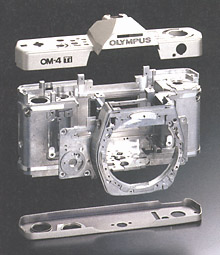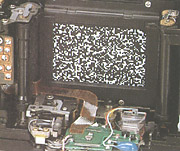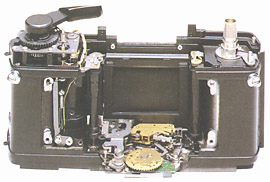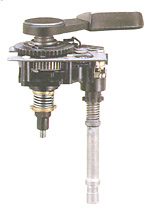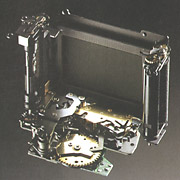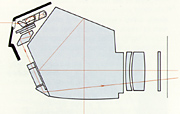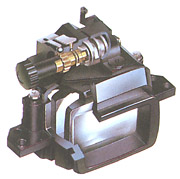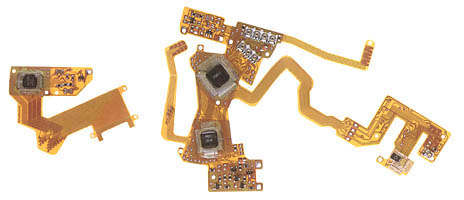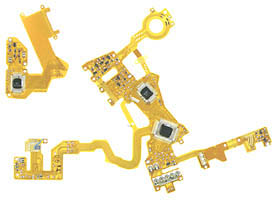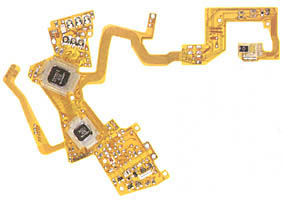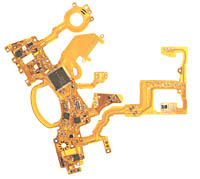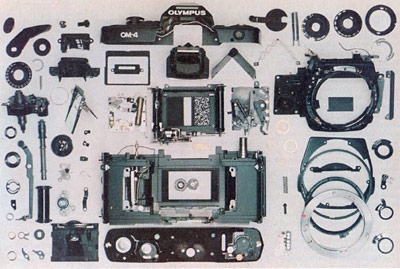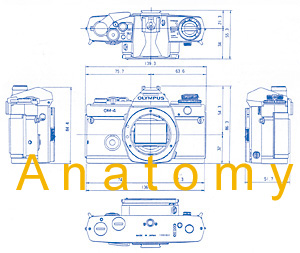
![]()
A true system camera allows users to continue to use their system units when new camera model appears. To maintain full interchangeability among all OM System units, the exterior design of the OM-3 and OM-4 is fundamentally the same as the OM-1 and OM-2.
Fitting a host of new features - the powerful microcomputer required for Multi Spot Metering, the LCD viewfinder display mechanism, the dioptric adjustment mechanism, showerproofing material, etc - into the tiny camera body is a challenging task.
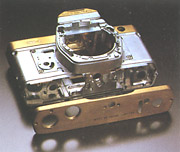
Another problem is where to position the new spot metering controls: the Multi Spot Button, Highlight Button, Shadow Button, Memory lever and Clear Lever. This is one of the toughest challenges of the whole design project, because the essence of the Multi Spot Metering concept is predicated on quick, simple operation.
These controls are grouped
around the shutter release. They differ in shape, size, position and height
for easy recognition and effortless operation. The
pentaprism section is redesigned to fit with the overall more modern,
attractive appearance.
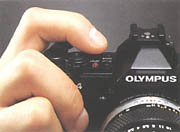
The reason the OM-3(4) is just a fraction larger than the OM-1(2) has nothing to do with the Multi Spot Metering function, or with the many other refinements incorporated. The extra millimeter is taken up by a layer of shower resistant sealings.
This rubber or foam-plastic gaskets make the camera considerably more resistant to inclement weather and impact.
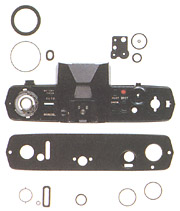
Shower resistant
sealings
Part of the OM-3Ti and OM-4Ti body is constructed of tough and lightweight titanium.
The exceptional strength of titanium makes it extremely difficult to process. A deep pressing process is employed, which is one of the most difficult of press technologies.
Olympus engineers spend several years of research in perfecting the press process. The result is a super tough titanium shell with the same accuracy and smoothness as the brass shell used in the original OM-3 and OM-4.
